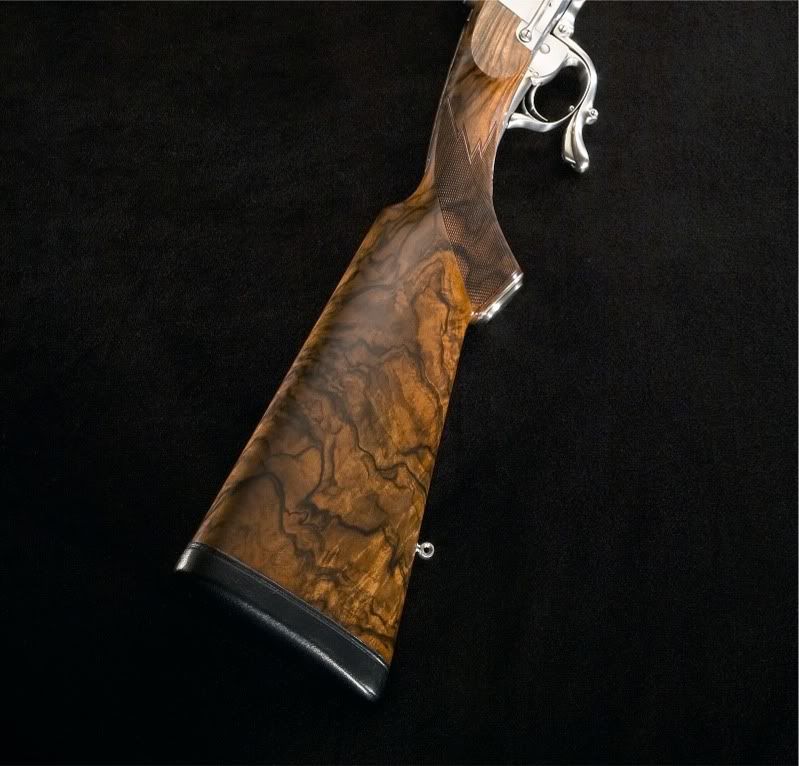tut:
I am sure from your description the gentleman is the same guy who displays at the Baltimore show each spring. I have seen his English walnut; its appearance is basically the same as the few trees I have cut here in PA: fairly light in color, somewhat open-pored, little contrasting streaking/marbling. It will, however, make up into a very nice stock, although you may wish to dye the wood a bit.
In answer to your question, (not being a horticultural person) I would think you are correct in that the soil content is what makes the difference. Seeing as how all thin-shelled walnut that is used for gunstocks (Circassian, Frenceh, Turkish, English) is the same species of tree, where it's grown and the conditions the tree endures seem to be the deciding factor. This is a point of interest to me, too, so any information from knowledegable people would be welcome.
Craig Libhart
Tut, I pretty much agree with Craig's analysis in that eastern grown "English" for better words doesn't have the growing conditions that give it the mineral streaks etc. I cut a "English" walnut in Pennsylvania a number of years ago that had very little mineral streaking in it. although it had very nice grain or fiber flow. The Juglans Regia from California etc is an different matter, as shown by the two blanks below.


Here is a photo of some Turkish that I worked with a while back. It looks entirely different than California wood. This wood was not my "cup of tea" but it looks fine on a Perazzi target gun.

Then we have this piece of Turkish that looks very nice on a Gibbs.
